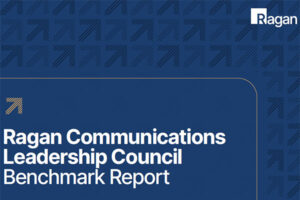DE&I data: Unveiling insights for inclusive excellence
The challenges and rewards of data-driven DE&I work.

Tarek Kamil is the CEO of Cerkl Broadcast. A tech enthusiast and entrepreneur, he strives to create innovative solutions that positively impact the digital world. With a passion for blending technology and creativity, he aims to inspire and make a difference through his ventures.
Companies in the United States spend some $8 billion a year on diversity, equity, and inclusion (DE&I). However, it’s apparent that they are accomplishing remarkably little considering their investments.
Organizations recognize that diversity isn’t just a moral imperative, and many see it as a strategic advantage. But it appears that most aren’t adopting practices that use evidence-based approaches and DE&I data.
DE&I data includes demographic, socioeconomic, and cultural data used to assess and improve representation, fairness, and a sense of belonging within organizations and communities. It can include demographics (age, gender, race/ethnicity), employment levels, job roles, pay equity, promotion rates, employee surveys on inclusion, retention rates, and training participation.
With access to this data, DE&I practitioners can gather qualitative insights on workplace experiences and barriers faced by underrepresented groups. This should include regular review and analysis.
While these strategies can be enormously important, there are many challenges. Some companies are cutting back on DE&I, while others simply aren’t accomplishing enough. According to the Harvard Business Review, those who aren’t tracking and analyzing the data end up guessing and speculating.
By utilizing data to shape diversity initiatives, practitioners strive to create a more equitable and diverse workplace.
The challenges of data-driven DE&I work
Data-driven decision-making is nothing new. The concept emerged in the 1960s, and it has revolutionized various aspects of business operations since then.
The amount of money companies spend on DE&I has grown annually, with Global Industry Analysts Inc. predicting the global spend will reach $24.3-billion by 2030. But the dilemma is that for many companies, progress to increase inclusion and diversity has been slow or nonexistent. Not only has DE&I growth been slow, but people are trying to ban initiatives because some people identify it as radical reverse discrimination.
It can seem like a contradiction. However, the data points to DE&I initiatives being an asset to organizations as long as they use data to their advantage. But they need to learn how to track, measure, and analyze the success of their initiatives.
Following these steps helps practitioners illuminate disparities and make informed decisions. It unveils hidden biases, identifies underrepresented groups, and measures progress over time. By harnessing data, organizations cultivate transparency, pinpoint areas for improvement, and create a more inclusive environment.
Berkshire Associates puts it like this: “Data analytics help HR and DEI teams better understand the dynamics and evolution of their organization’s diversity and inclusion initiatives. Data analytics can provide valuable insights into which initiatives are succeeding and which may need to be reworked.”
Collecting data
Effective DE&I initiatives are built on a solid foundation of accurate and comprehensive diversity data collection.
DE&I data can be gathered through anonymous employee surveys, self-identification forms, and HR records. Whichever method is used, it’s crucial to ensure data privacy and voluntary participation. Utilize third-party tools or software to analyze and visualize data, highlighting disparities and areas for improvement. Also consider qualitative methods like focus groups for deeper insights into experiences.
Many organizations encounter challenges in gathering data, selecting appropriate metrics, and, notably, deriving significant insights from these hard numbers.
Establishing transparent and confidential methods for data collection is crucial to ensure employees’ trust and compliance. DE&I data collection isn’t a one-time event. It should be an ongoing process to track progress and identify trends over time. At the end of the day, if your employees don’t feel safe to share their experiences, then they will not participate in data collection. This means building trust through inclusive communications. This means that your employees should know if and why you are asking for their personal information.
Here are some tips to keep in mind when planning and executing data collection:
Defining metrics
Clearly outline all of the DE&I metrics you aim to measure. For instance, measure how many high-ranking executives are people of color or how much people are paid based on their gender.
Of course, not all metrics will necessarily suit your needs. You need to define the metrics you are going to use in terms of your company size and operation. You should also identify any areas that represent high risk or concern.
Here are some useful DEI metrics to consider:
- Analyzing demographics across all levels in the organization is a good way to measure diversity.
- Calculating employee retention rates across all groups will indicate whether people in specific demographic groups are quitting sooner or staying longer.
- Assessing employee promotion rates is an excellent way to measure the success of effective DEI strategies. For example, you can compare advancement stats for men vs women, since they typically experience slower promotion rates.
- Examining pay disparities to ensure people are compensated according to the work delivered and not their gender, color, sexual orientation, and so on.
Keeping language in mind
When asking employees questions about topics in DE&I, it’s very important to research correct terminology. Inclusive language can easily be the reason why employees don’t participate.
The Linguistic Society of America has compiled guidelines for inclusive language. Ultimately, it acknowledges diversity, is sensitive to differences, conveys respect to all people, and it promotes equal opportunities. It’s the obvious way to inspire confidence and include everyone in the conversation.
Enforcing data protections
It’s essential to implement strong data security measures to safeguard collected information. If you don’t, and your company becomes the target of a data breach, you could end up being legally liable.
Be sure to train HR and managers on collecting and handling sensitive data. Ensure everyone in the organization uses strong passwords for online data. Also be sure to only do business with trustworthy individuals and companies that implement strong cybersecurity safeguards.
Measuring your success
What you need are the right metrics to track and benchmark data-driven DEI initiatives. Lee Jourdan, an advisor in tech and human capital management, identifies seven metrics that organizations can use to measure DEI progress:
- Attrition, which may be voluntary or involuntary. This one is important because typically, you won’t know you have a problem until it’s established itself.
- Performance, which is commonly an annual review of individuals. Jourdan prefers group ratings that help to eliminate bias.
- Promotions that are assessed by gender, race, grade and so on.
- A leadership pipeline that ought to reflect diversity objectives.
- An employment pipeline that should reflect all aspects of DEI.
- Pay equity, which doesn’t mean same pay for different work, but rather the variables that govern what people are paid. It ought to be governed by performance across the board.
- Inclusion, which measures employee experience including relationships within the company.
Within each of these, companies should track certain specifics, particularly gender, race, and ethnicity where appropriate. Ultimately, he says that “what gets measured gets done.” And once the metrics have been benchmarked, they potentially identify how successful DEI programs are.
The power of an analytical DE&I strategy
Data-driven DE&I strategies are guiding organizations toward lasting change. The substantial investments, currently reaching billions annually, reflect a recognition that the path to an equitable workplace gives organizations an economic and ethical foundation. Yet, the trajectory of progress remains uneven, with some grappling to bridge the gaps while others voice concerns about the very initiatives designed to close them.
While the journey begins with data collection, it’s essential to remember that the true transformation unfolds in the realm of analysis and action. The insights gleaned from the collected data should not gather dust on the shelves of reports but should inform practical, adaptive strategies.
By translating data into tangible steps, organizations can steer toward a future where representation in leadership is reflective of society. This is where barriers can be dismantled through informed interventions, and where engagement isn’t merely a metric. But it is a testament to a thriving, united workforce.






